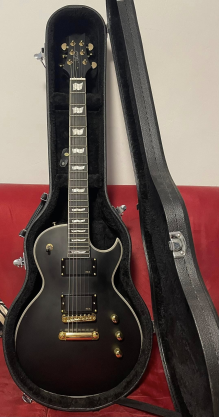Chistopher
malapterurus electricus tonewood instigator
What are some hard and fast rules you have when buying or working on guitars? I have a few:
1 - Muting or unmuting it should be completely mindless and require no more than a single motion.
2 - Any pot beyond passive volume and tone can usually just be a switch.
3 - During a performance, I should be able to get to any sound I need from any sound I need in a single motion.
4 - All my active instruments must also have a passive mode.
5 - No coil splits that cause a drop in volume.
6 - Whammy bar should be completely free to do a full unobstructed rotation without the guitar cable blocking it. This doesn't come up too often.
7 - Cheaper is better. 90% of the value of a guitar is usually within the first $1000. No matter how much I pay, not a single piece of gear will sound better than I do.
8 - No fine tuners unless I need a D-tuna.
1 - Muting or unmuting it should be completely mindless and require no more than a single motion.
2 - Any pot beyond passive volume and tone can usually just be a switch.
3 - During a performance, I should be able to get to any sound I need from any sound I need in a single motion.
4 - All my active instruments must also have a passive mode.
5 - No coil splits that cause a drop in volume.
6 - Whammy bar should be completely free to do a full unobstructed rotation without the guitar cable blocking it. This doesn't come up too often.
7 - Cheaper is better. 90% of the value of a guitar is usually within the first $1000. No matter how much I pay, not a single piece of gear will sound better than I do.
8 - No fine tuners unless I need a D-tuna.

